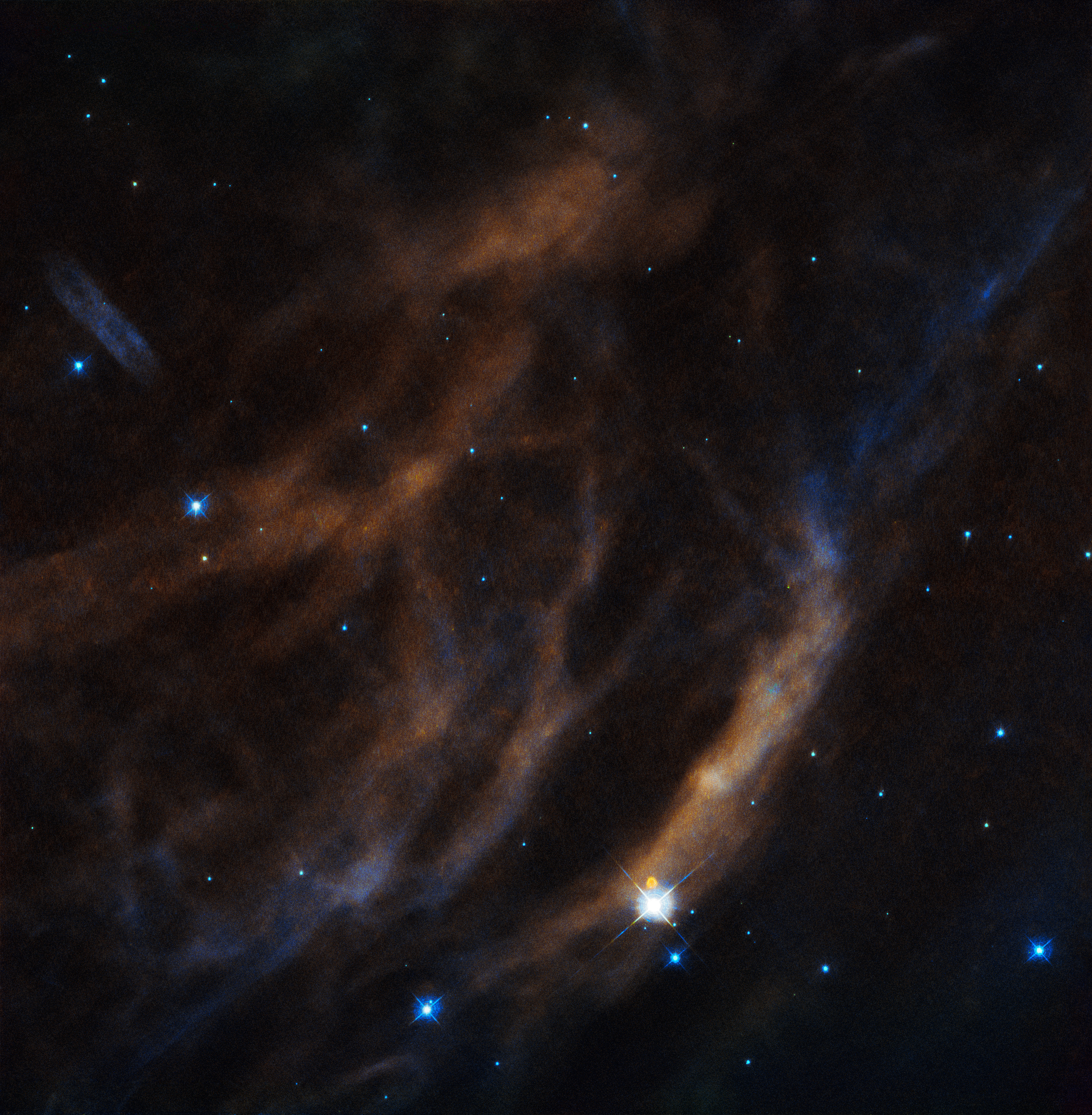EZ Canis Majoris on:
[Wikipedia]
[Google]
[Amazon]
EZ Canis Majoris (abbreviated to EZ CMa, also designated as WR 6) is
 L. W. Ross announced his discovery that the star's brightness varies, in 1961. EZ CMa has an
L. W. Ross announced his discovery that the star's brightness varies, in 1961. EZ CMa has an  Observations of the light variations over a four-month period from late 2015 to early 2016 confirmed the clear variations. This was interpreted as a orbital period with rapid
Observations of the light variations over a four-month period from late 2015 to early 2016 confirmed the clear variations. This was interpreted as a orbital period with rapid
binary system
A binary system is a system of two astronomical bodies of the same kind that are comparable in size. Definitions vary, but typically require the center of mass to be located outside of either object. (See animated examples.)
The most common ki ...
in the constellation
A constellation is an area on the celestial sphere in which a group of visible stars forms Asterism (astronomy), a perceived pattern or outline, typically representing an animal, mythological subject, or inanimate object.
The first constellati ...
of Canis Major
Canis Major is a constellation in the southern celestial hemisphere. In the second century, it was included in Ptolemy's 48 constellations, and is counted among the 88 modern constellations. Its name is Latin for "greater dog" in contrast to C ...
. The primary is a Wolf-Rayet star and it is one of the ten brightest Wolf-Rayet stars, brighter than apparent magnitude
Apparent magnitude () is a measure of the Irradiance, brightness of a star, astronomical object or other celestial objects like artificial satellites. Its value depends on its intrinsic luminosity, its distance, and any extinction (astronomy), ...
7.
Binary system
 L. W. Ross announced his discovery that the star's brightness varies, in 1961. EZ CMa has an
L. W. Ross announced his discovery that the star's brightness varies, in 1961. EZ CMa has an apparent visual magnitude
Apparent magnitude () is a measure of the brightness of a star, astronomical object or other celestial objects like artificial satellites. Its value depends on its intrinsic luminosity, its distance, and any extinction of the object's light ca ...
which varies between 6.71 and 6.95 over a period of 3.766 days, along with changes in the spectrum
A spectrum (: spectra or spectrums) is a set of related ideas, objects, or properties whose features overlap such that they blend to form a continuum. The word ''spectrum'' was first used scientifically in optics to describe the rainbow of co ...
. It has been proposed that it could be a binary star
A binary star or binary star system is a system of two stars that are gravitationally bound to and in orbit around each other. Binary stars in the night sky that are seen as a single object to the naked eye are often resolved as separate stars us ...
, with a neutron star
A neutron star is the gravitationally collapsed Stellar core, core of a massive supergiant star. It results from the supernova explosion of a stellar evolution#Massive star, massive star—combined with gravitational collapse—that compresses ...
as companion that would complete an orbit around the Wolf-Rayet with that period, being the cause of those variations. The General Catalogue of Variable Stars lists it as a possible cataclysmic variable on this basis. It has been argued that the companion does not exist and spectral variations are caused by activity on the star's surface.
 Observations of the light variations over a four-month period from late 2015 to early 2016 confirmed the clear variations. This was interpreted as a orbital period with rapid
Observations of the light variations over a four-month period from late 2015 to early 2016 confirmed the clear variations. This was interpreted as a orbital period with rapid apsidal precession
In celestial mechanics, apsidal precession (or apsidal advance) is the precession (gradual rotation) of the line connecting the apsis, apsides (line of apsides) of an orbiting body, astronomical body's orbit. The apsides are the orbital poi ...
completing a full rotation in about 100 days. The orbit is inclined at around 60–74 degrees and there are two eclipses during each orbit.
Wolf Rayet star and nebula
The spectral type of WN4 indicates an extremely hot star, and this leads to a very high luminosity, mostly emitted asultraviolet
Ultraviolet radiation, also known as simply UV, is electromagnetic radiation of wavelengths of 10–400 nanometers, shorter than that of visible light, but longer than X-rays. UV radiation is present in sunlight and constitutes about 10% of ...
radiation. The spectrum shows a star entirely devoid of hydrogen
Hydrogen is a chemical element; it has chemical symbol, symbol H and atomic number 1. It is the lightest and abundance of the chemical elements, most abundant chemical element in the universe, constituting about 75% of all baryon, normal matter ...
at the surface.
EZ CMa is surrounded by a faint bubble nebula, a small HII region blown by stellar winds up to 1,700 km/s and ionised by the intense UV radiation. This is catalogued as Sharpless Sh2-308, or just S308. It is likely to be a member of the very scattered open cluster
An open cluster is a type of star cluster made of tens to a few thousand stars that were formed from the same giant molecular cloud and have roughly the same age. More than 1,100 open clusters have been discovered within the Milky Way galaxy, and ...
Collinder 121, found around the orange supergiant ο1 CMa.
References
External links
* * {{DEFAULTSORT:EZ Canis Majoris Canis Major Wolf–Rayet stars 050896 033165 Canis Majoris, EZ CD-23 04553 2583 Variable stars Eclipsing binaries